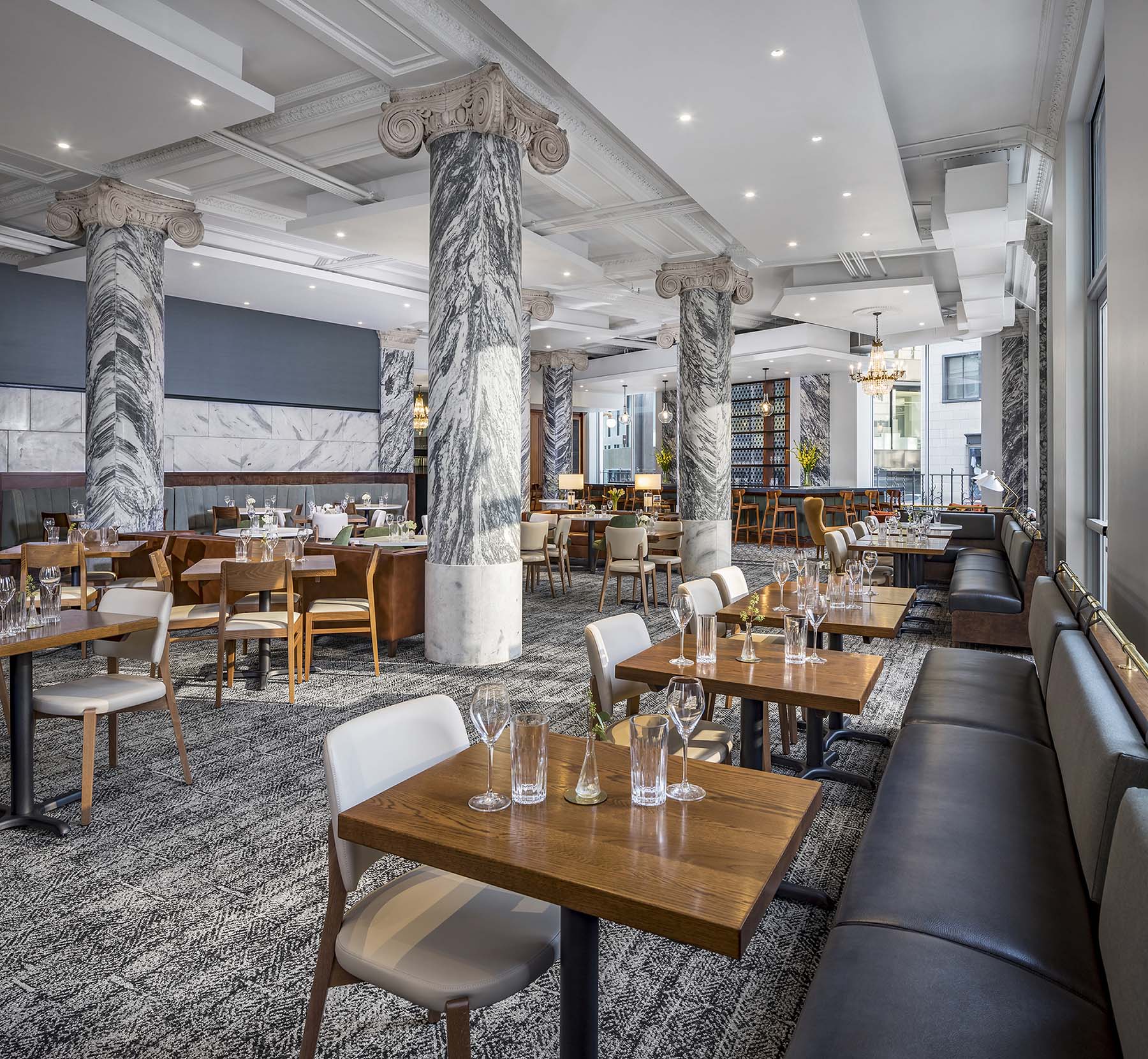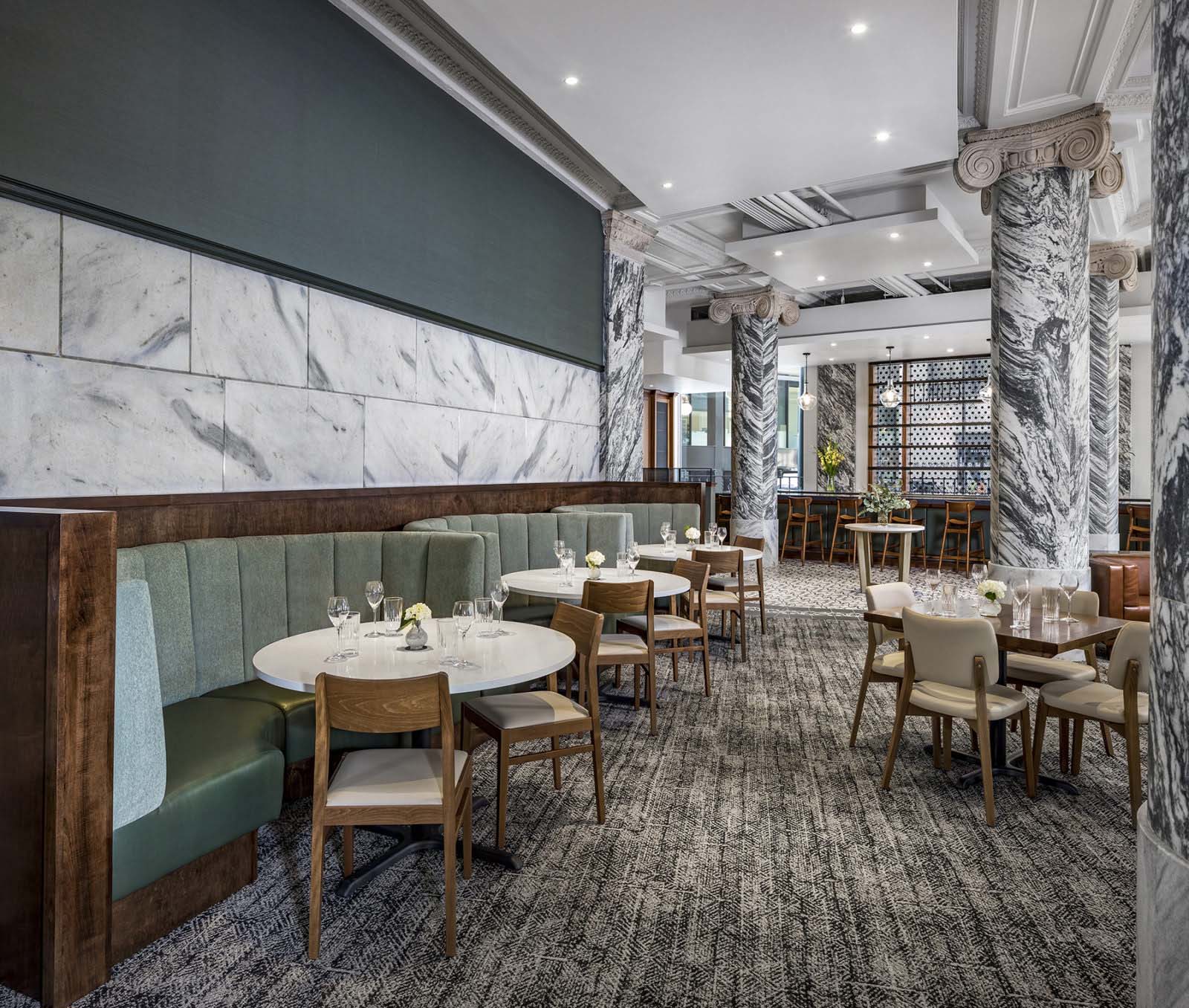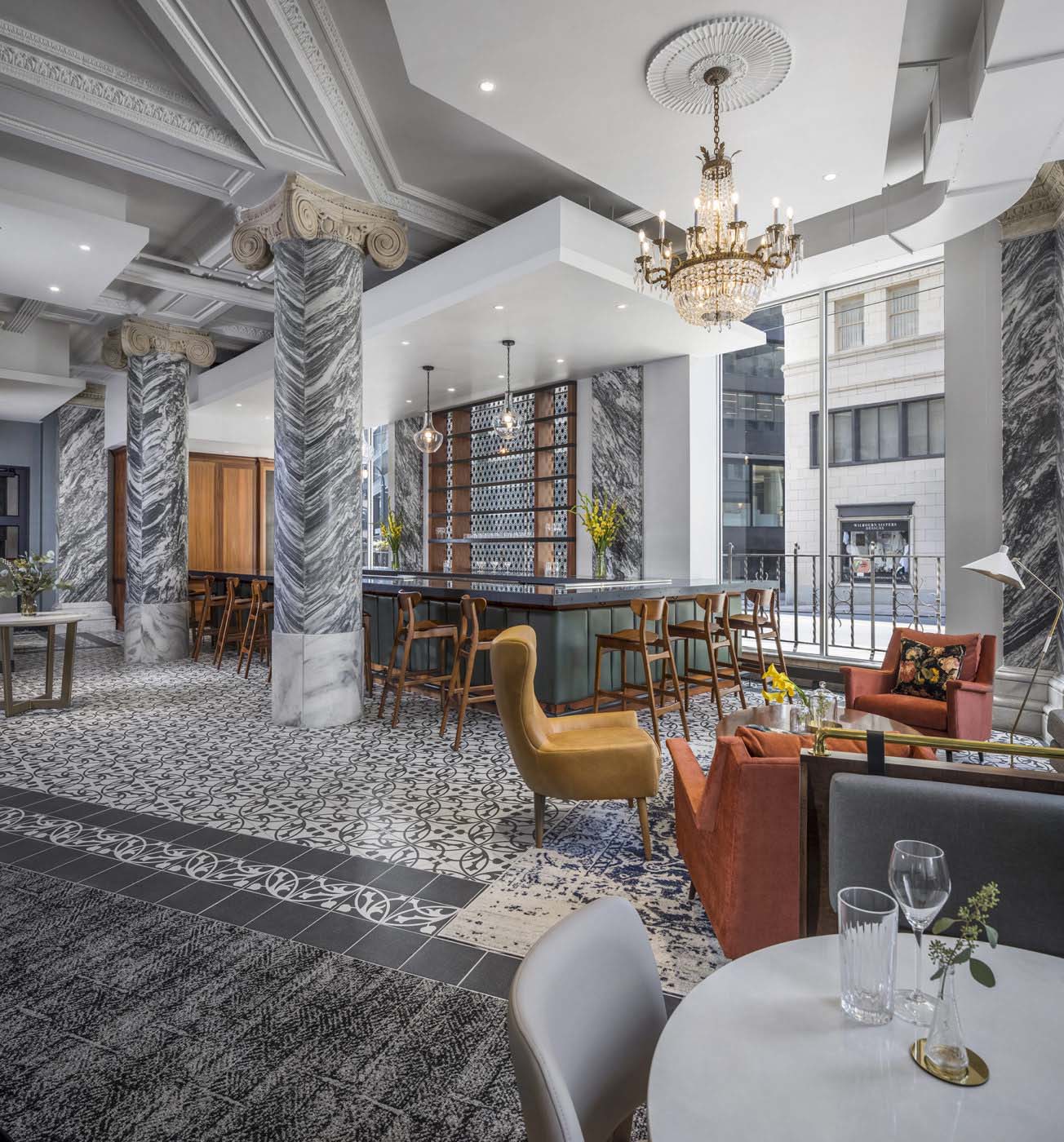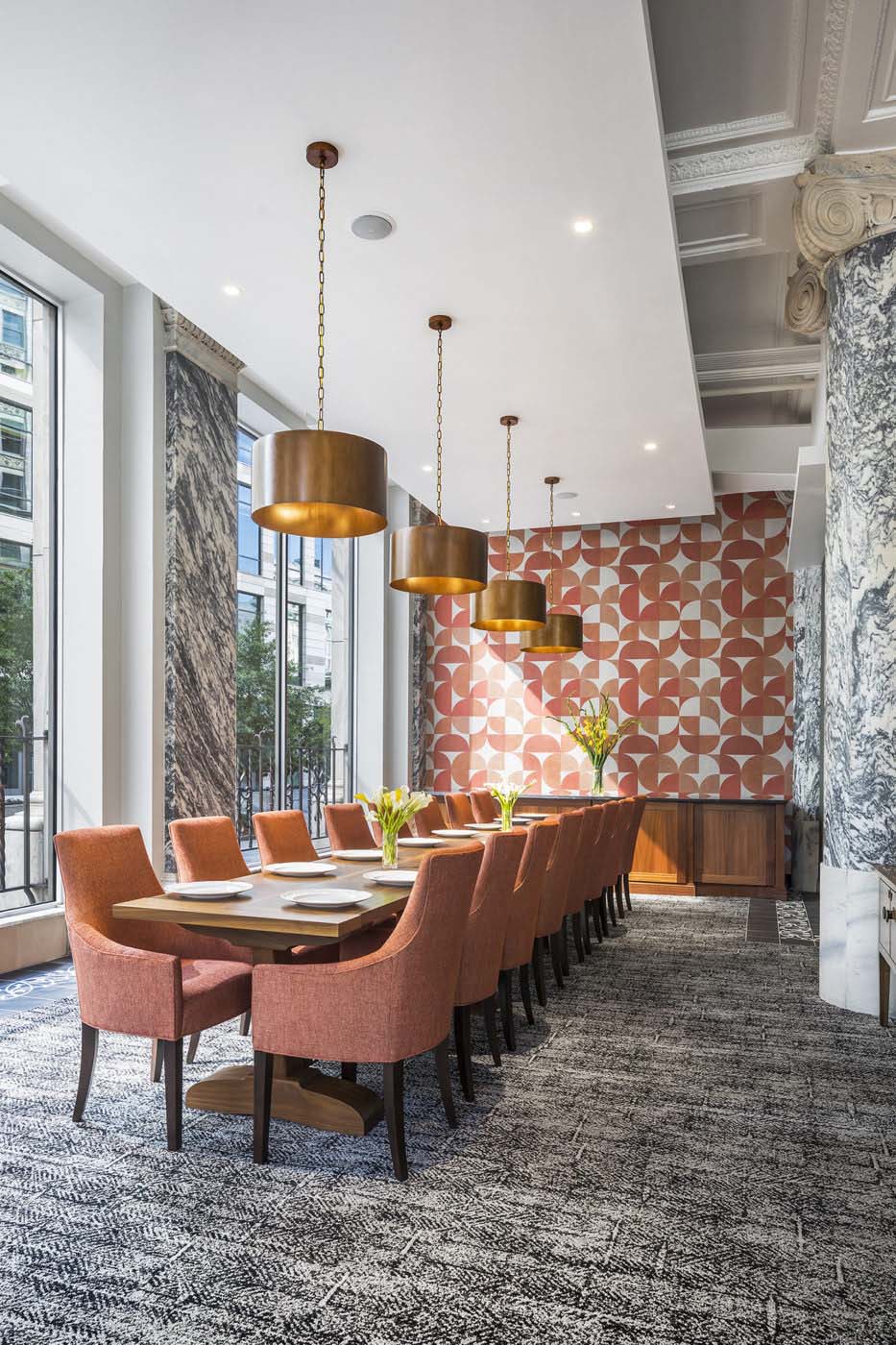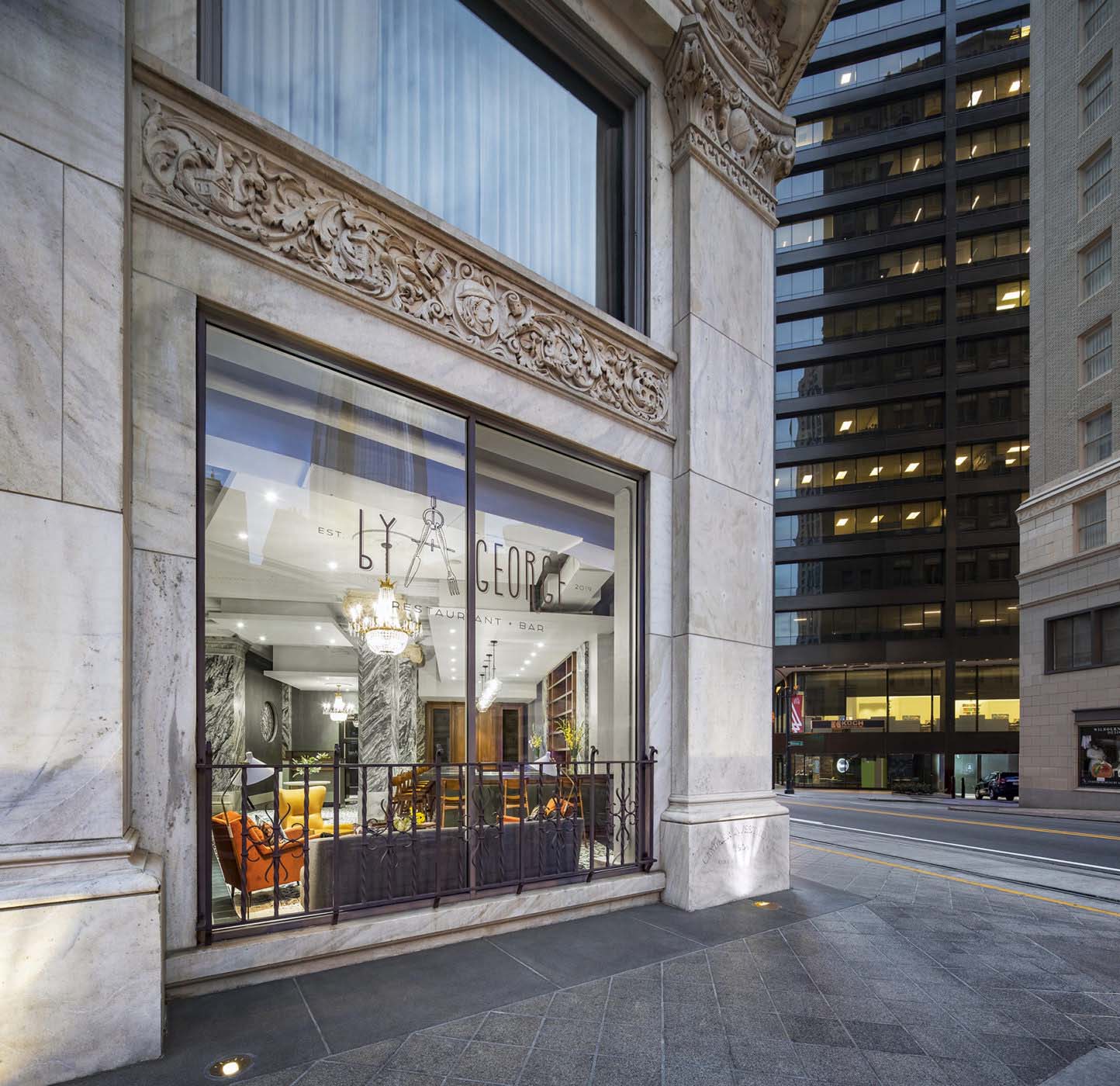0 VotesYear: 2020|Entry Categories: Interior Architecture
By George at The Candler Hotel
By George Restaurant and Bar, by two-time James Beard Award-winning chef Hugh Acheson, was an integral part of the adaptive–reuse that transformed the historic Candler Building into The Candler Hotel – a stylish, modern-day hotel that re-imagines and reinvents this iconic Downtown Atlanta landmark. Located in the space that was once the former grand banking hall, the restaurant sits at the promontory of the flatiron- shaped building and features cavernous ceilings, deeply-veined, marble columns with Ionic capitals, and ample visibility from the street along three sides. By George provides guests with a distinctive restaurant experience within a harmonious composition of space, elevated by refined details, textures, colors and furniture that play against the inherent beauty of the original architectural elements.
Design Challenge
The project charge was to create a distinctive restaurant experience, within a newly opened hotel, that could serve both locals and visitors to Atlanta’s downtown with equal grace and appeal. A part of the adaptive–reuse of a 113–year–old building on the National Register, the long-neglected space was once the prominent, grand banking hall and was located on the promontory of the flatiron-shaped building. The space was endowed with cavernous ceilings and ample visibility from three sides which created challenges for acoustics and guest comfort.
The design needed to respect the historic significance and substantial architectural elements remaining from the original ornate banking hall, while simultaneously evoking an atmosphere appropriate for an elegant yet egalitarian French restaurant. It had to speak eloquently of two parallel stories, of both the storied past and forward–looking future of an iconic Atlanta building. Challenges included planning discrete food serving and dish–clearing routes to a full–service kitchen located a level below, and placing a feature bar in a space largely defined by exterior glazed walls. Also mechanical equipment could not be concealed and required careful design for minimal visual impact.
The concept explored themes inherent to the period when the building was conceived, during the early 20th Century rise of Atlanta as a center of commence in the South. The intent was to capture the crossover from classical Beaux–Arts to Art–Deco design influences, distilling the elegance and exuberance that marked the transition from the Gilded to the Jazz Age. The concept explored ways of celebrating a bygone era with a language more relevant in the 21st Century.Physical Context
The existing fabric of the space provided a rich palette to explore and draw from. Patrons are greeted by a remnant of original tile floor, leading to a full bar set against the exterior windows. A patterned metal scrim, recalling the teller’s cages, screens the barback from the street. Connected at the ceiling by original plaster beams and coffers, eight stout, deeply-veined marble columns with Ionic capitals march around the corner into the dining room. Their bold marble grain is complimented by sleek leather booths, banquettes and elegant modern furniture. Ceiling clouds organize individual areas, like a corner–window lounge highlighted by one of four original crystal chandeliers, while providing acoustic control and concealing carefully arranged pipes and mechanical ducts.
The columns were dominant elements that ordered and helped subdivide the larger space into intimate and individually programmed zones. Decorative brass rails support banquette cushion on leather straps, which serve to frame the main dining area, and a mix of round and rectangular tables provide seating flexibility. A 30–foot, custom communal table accommodates guests who wish to work, read, or meet friends. This space is set apart by a colorful fabric wall pattern accenting custom millwork and punctuated by copper pendants lights.
Every element added was crafted purposefully to complement the original space and the result is a composition that arrests the eye with drama, then draws it in to focus on the carefully composed moments within. Ultimately, the design is a harmonious composition of space, elevated by refined details, textures, colors and furniture that play against the inherent beauty of the original architectural elements.
Share This, Choose Your Platform!

